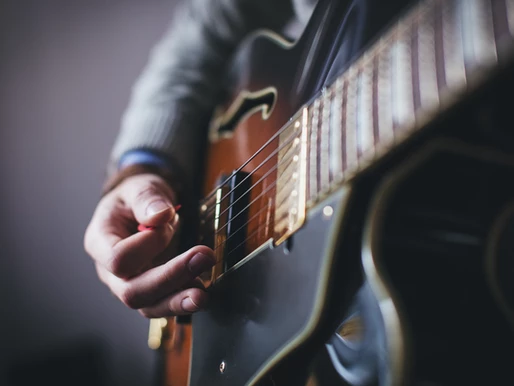Uncategorized
Guitar tablature vs. Standard Notation
When starting to learn guitar, many guitarists will use tablature (tab for short) to be able to read the music that they want to play.
A tab is a simplified form of notation specific to the guitar (there are also tabs for bass and drums), it simply lays out the guitar fretboard as a diagram like so.
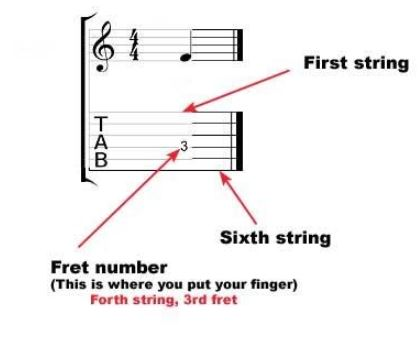
You match the numbers on the tab to the same fret on your guitar, with the six lines on the tab representing the six strings on your guitar. As you can see this is easy to read and understand, which is what makes it so popular amongst guitarists.
There are some major flaws with the guitar tab, however, especially in its simplest form.
Simple guitar tablature does not provide much information about the music itself, while it can tell you where to put your finger on the guitar it does not tell you what the rhythmic value of those notes, what key it is, what the tempo is, what the dynamics are etc…
These basic tabs essentially rely on the user being extremely familiar with these attributes of the song they are trying to play and to be able to replicate them by ear, and while ear training itself is a good skill to develop, you may get stuck in a situation where you need to learn a piece of music but you don’t have the ability to listen to the original.
This is where notation comes in, a notation for guitar is written on the treble clef and looks like this.
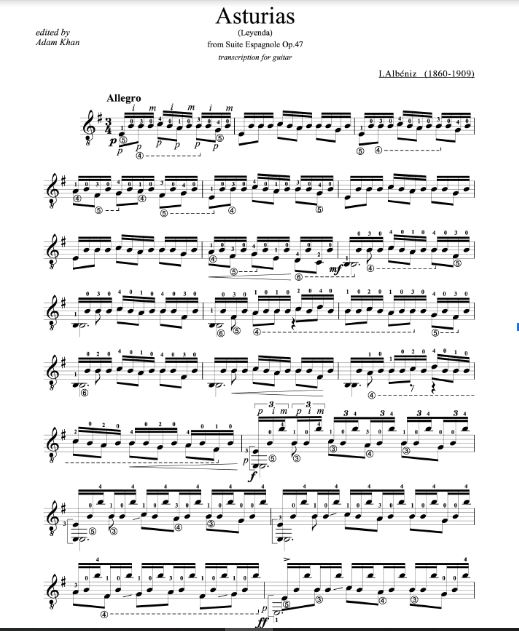
As you can see, we get the notes on the stave, their rhythmic values as well as tempo, time signature, and dynamic instructions. This type of notation can be daunting at first, as you will need to learn not only the notes on the stave but also the notes on the guitar fretboard. Here’s an easy way to remember the notes on the stave.
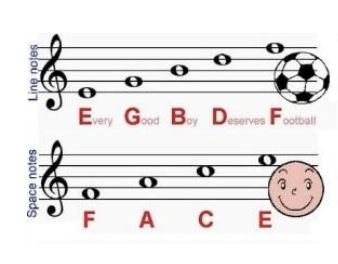
Learning the notes across the guitar neck is more difficult but you can use diagrams such as this to help.
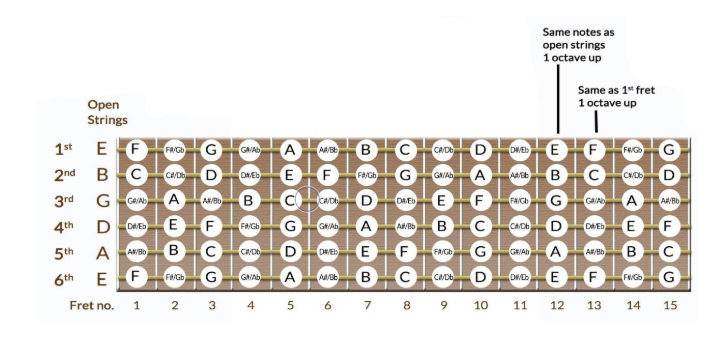
The good thing is that once you learn the notes on the stave and your guitar, this will become a universal language that you can use to communicate with other musicians, for example, a pianist will understand if you ask them to play middle C, they won’t, however, understand if you ask them to play the 1st fret on the B string.
If you would like to expand your guitar knowledge, do not miss my articles in which I analyze the 8 essential chords for guitar beginners, and How to tune a guitar.

